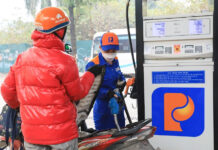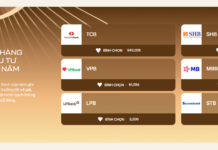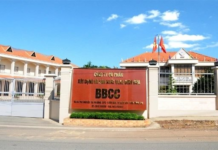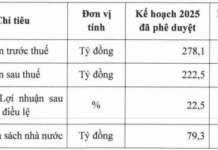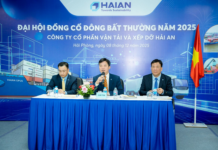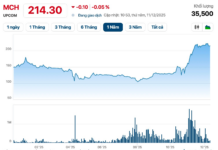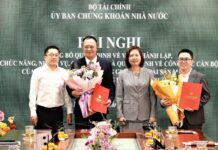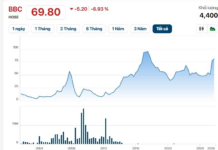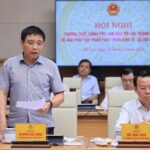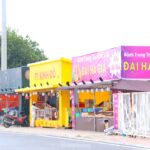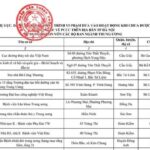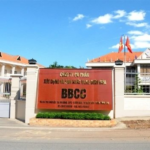Focusing on Infrastructure Investment
On September 9, the People’s Committee of Phuc Tho District, Hanoi, and the T&T Group inaugurated the construction of technical infrastructure for the Nam Phuc Tho Industrial Cluster – Phase 1. With a scale of 41.7 hectares and a total investment of nearly VND 780 billion, the Nam Phuc Tho Industrial Cluster – Phase 1 is one of Hanoi’s key projects and is the largest industrial cluster in the capital to date.
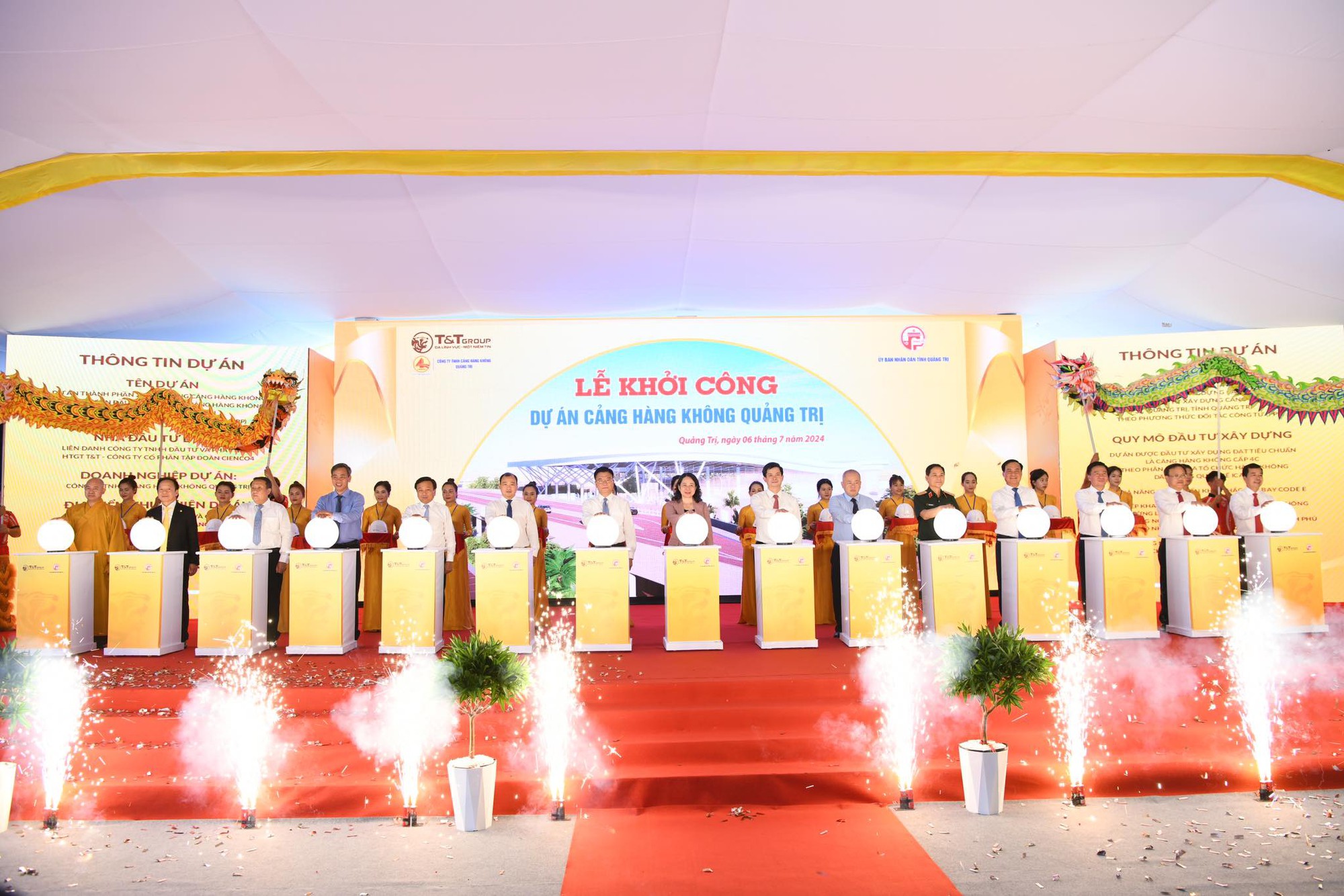
The Nam Phuc Tho Industrial Cluster – Phase 1 is one of Hanoi’s key projects and the largest industrial cluster in the city to date.
Located on National Highway 32, the Nam Phuc Tho Industrial Cluster – Phase 1 is also a crucial link in the chain of T&T Group’s projects. Especially, the cluster’s connection with the SuperPortTM Vietnam – one of the largest logistics centers in Northern Vietnam, operated by a joint venture between T&T Group and YCH Group (Singapore) – further enhances its strategic position.
In addition to infrastructure development, T&T Group also strives for sustainability. On September 14, SuperPortTM Vietnam organized an event titled “SuperPortTM Vietnam’s Future Vision.” During the event, the leadership of SuperPortTM Vietnam committed to integrating advanced sustainable development solutions into its core operations to achieve a net-zero emission goal by 2040. This initiative aligns with the Vietnamese government’s commitment to the international community regarding net-zero emissions by 2050.
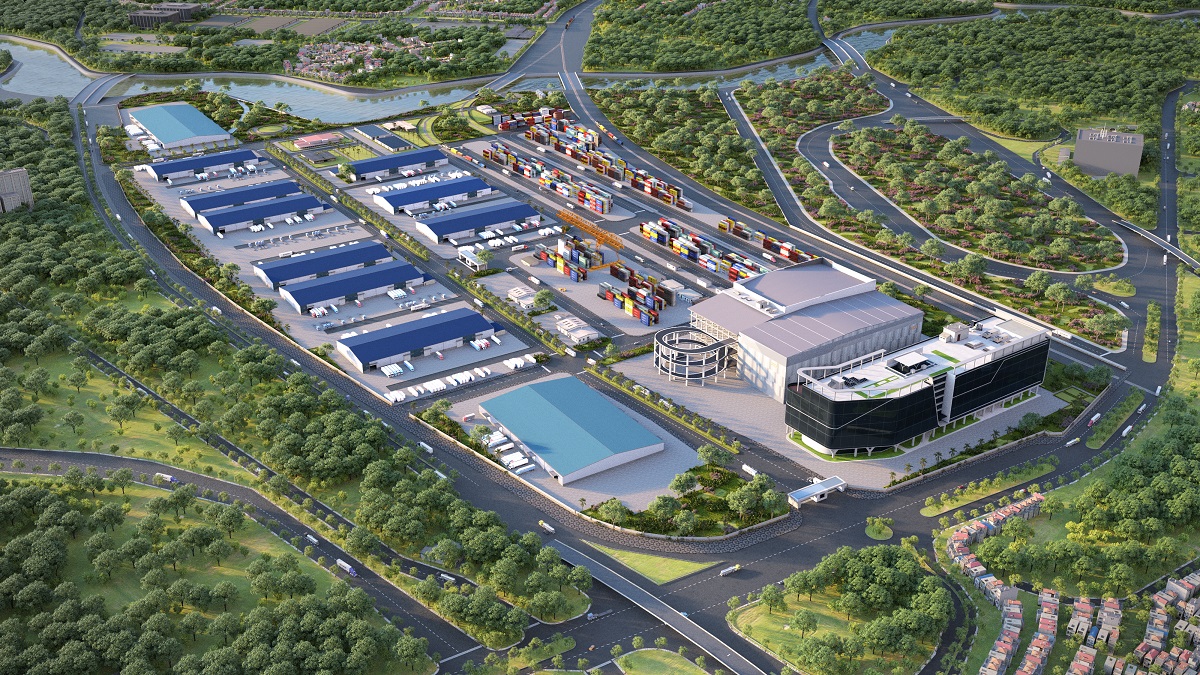
SuperPortTM Vietnam – The first “super port” of the ASEAN Smart Logistics Network, developed by a joint venture between T&T Group and YCH Group (Singapore)
T&T Group’s investment in transportation infrastructure extends beyond seaports to aviation and road networks.
Specifically, on July 6, 2024, a joint venture between T&T Infrastructure Development and Transport Investment Joint Stock Company (a member of T&T Group) and CIENCO 4 Joint Stock Company commenced the construction of Quang Tri Airport under the Public-Private Partnership (PPP) investment model.
T&T Group’s PPP investment in Quang Tri Airport is a positive signal after more than five years of Van Don Airport – the first PPP-invested airport – being put into operation, with no other airports successfully investing through PPP. Notably, despite the Quang Tri Airport PPP project not applying the mechanism of sharing reduced revenue, the investor self-arranged a total investment of over VND 5,821 billion, which is a rare occurrence in PPP investment in recent times.
Currently, T&T Group is promoting and interested in investing in two major transportation infrastructure projects: the Bao Loc – Lien Khuong Expressway and Component 3 (building an expressway under the PPP model) of the Hanoi Ring Road 4 project.
Regarding the Bao Loc – Lien Khuong Expressway project, T&T Group has joined forces with Phuong Trang Investment and Construction Transport Joint Stock Company and Phuong Thanh Construction and Transport Joint Stock Company to establish an investor consortium to implement the 73km, four-lane expressway project. Out of the total investment of over VND 19,520 billion for the project, the investors’ capital accounts for approximately VND 11,700 billion.
As for Component 3 of the Hanoi Ring Road 4 project, with a total investment of over VND 56,293 billion and investors’ capital of more than VND 29,525 billion, the Hanoi People’s Committee surveyed investors’ interest through the national bidding network. However, at the deadline for submitting expressions of interest, only one investor, the T&T Group, expressed interest in the project.
Attracting PPP Investment: Ensuring Benefits for Investors
According to statistics from the Ministry of Transport, as of early 2024, Vietnam had implemented 231 transport infrastructure projects with a total investment of approximately VND 698,267 billion under the PPP model (in the form of BOT, BT, BOO contracts, etc.).
Of these, the Ministry of Transport mobilized 72 PPP projects with a total investment of about VND 247,575 billion to invest in approximately 2,690 km of national highways and expressways. Localities mobilized 159 PPP projects with a total investment of about VND 450,692 billion.
The data shows that the mobilization of PPP investment in projects where the Ministry of Transport is the competent state agency mainly focused on the period from 2010 to 2015. From 2016 to the present, the Ministry of Transport has only successfully invested in three BOT projects on the North-South Expressway in the Eastern region (the Dien Chau – Bai Vot section, Nha Trang – Cam Lam, and Cam Lam – Vinh Hao) and one project under the BOO contract with a capital source of about VND 26,829 billion mobilized by investors.
Although the Law on Public-Private Partnership (PPP) Investment took effect on January 1, 2021, and guiding decrees have been issued with some new policies, no transport infrastructure projects under the Ministry of Transport as the competent state agency have been successfully implemented.
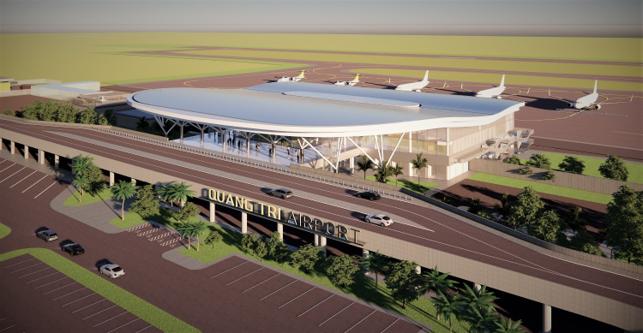
Quang Tri Airport Project implemented under the PPP model by the T&T – CIENCO4 investor joint venture
According to experts, despite the PPP Law’s introduction of some breakthrough mechanisms, such as revenue-sharing and capital mobilization, there are still obstacles for investors. These include unequal revenue-sharing mechanisms, the limitation on the state’s equity ratio to no more than 50% of the total investment of a PPP project, making many projects financially unviable, etc.
Additionally, while a PPP contract is between two partners, the state and the investor, the state has not always fulfilled its commitments in the contract due to subjective and objective factors. This situation affects the investor’s revenue, financial resources, borrowing capacity, and the confidence of investors and credit institutions.
The return of some investors to PPP transport infrastructure projects is encouraging. However, to ensure their benefits and peace of mind, according to Dr. Tran Chung, Chairman of the Vietnam Road Traffic Infrastructure Investors Association (VARSI), at least three obstacles need to be removed.
First, the guiding decree for the PPP Law is not thorough, and the risk-sharing mechanism is unfair, making it challenging to implement. Specifically, the decree stipulates that when the revenue of a PPP project increases, the investor must unconditionally share the profits with the state. However, when revenue decreases, the state will only share under certain conditions, such as changes in planning, policies, and laws that affect revenue; full implementation of measures to adjust prices, fees, and contract terms to ensure a minimum revenue of 75%; and verification of the reduced revenue by the State Audit Office of Vietnam.
Second, the regulation limiting the state’s capital contribution to a PPP project to no more than 50% of the total investment makes projects in challenging conditions, such as mountainous terrain, low traffic volume, and large land clearance requirements, financially unfeasible.
Third, in a PPP arrangement, the investor contributes 50% of the project’s capital, including 15% equity and 35% borrowed mainly from banks. However, as banks mobilize short-term capital to lend for long-term projects, there are inherent risks. The best financial plan for a project is to achieve a payback period of 15-17 years. Still, with the state’s capital contribution below 50%, no PPP project can achieve such a payback period. Due to the extended payback period, banks refuse to lend, which was the main reason five PPP projects on the North-South Expressway in 2017-2020 were rejected by banks.
Mr. Chung added that the current PPP approach does not encourage investors when projects with good traffic volume are invested in by the state, while projects in challenging mountainous areas with low traffic volume are offered under the PPP model. Investors only collect tolls to generate profits, averaging over 11% on their equity, which accounts for only 15-20% of the total project investment.
“In the past, investors have been frustrated by the perceived inequality in implementing PPP projects. Notably, 11 difficult BOT traffic projects affected by objective factors have been submitted to the Government and National Assembly for years without resolution, further exacerbating investors’ difficulties. BOT projects have a contract that allows for a fee adjustment once every three years, but it can take up to 9-10 years to implement this adjustment. The state’s inequality in implementing PPP projects, the uncooperative attitude, and even the negativity of many people towards BOT projects have discouraged investors from enthusiastically engaging in PPP investments,” Mr. Chung assessed.
The Storm’s Fury: How Strong Winds and Heavy Rains Caused Havoc in Thanh Hóa and Nghệ An Provinces
“Super Typhoon No. 4 battered two provinces on September 19, bringing heavy rainfall and strong winds that caused extensive damage and injuries. The storm’s ferocious winds led to several accidents, with large trees snapping and crashing, injuring multiple individuals and resulting in significant property damage.”
What Message Does the Bank Want to Convey Through This Year’s Hanoi International Marathon – Techcombank?
Mr. Pham Xuan Tai, the Deputy Director of the Hanoi Department of Culture and Sports, emphasized that this year’s run is more than just a sporting event; it holds a special significance.





